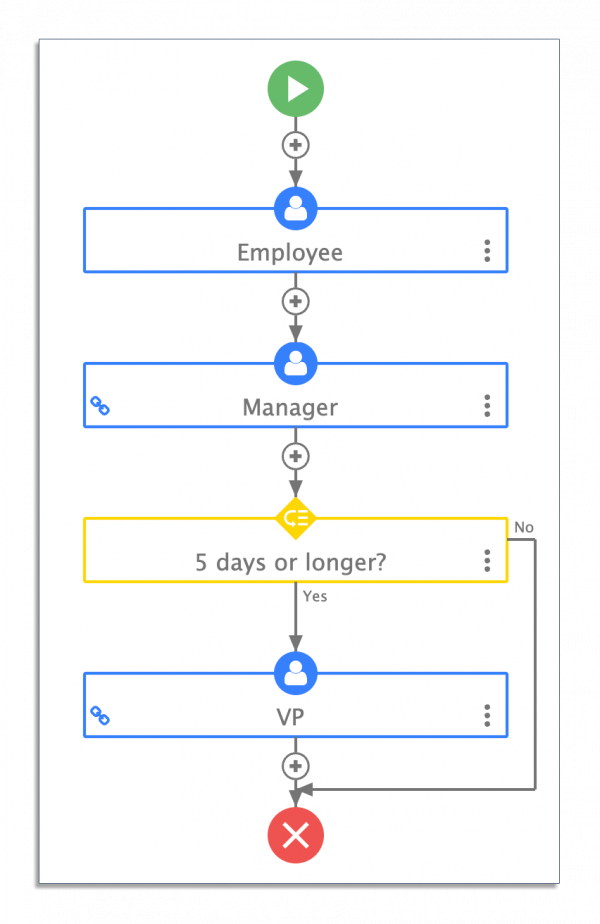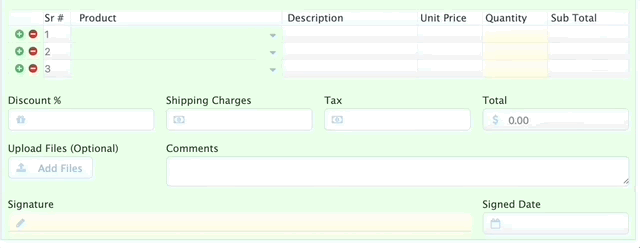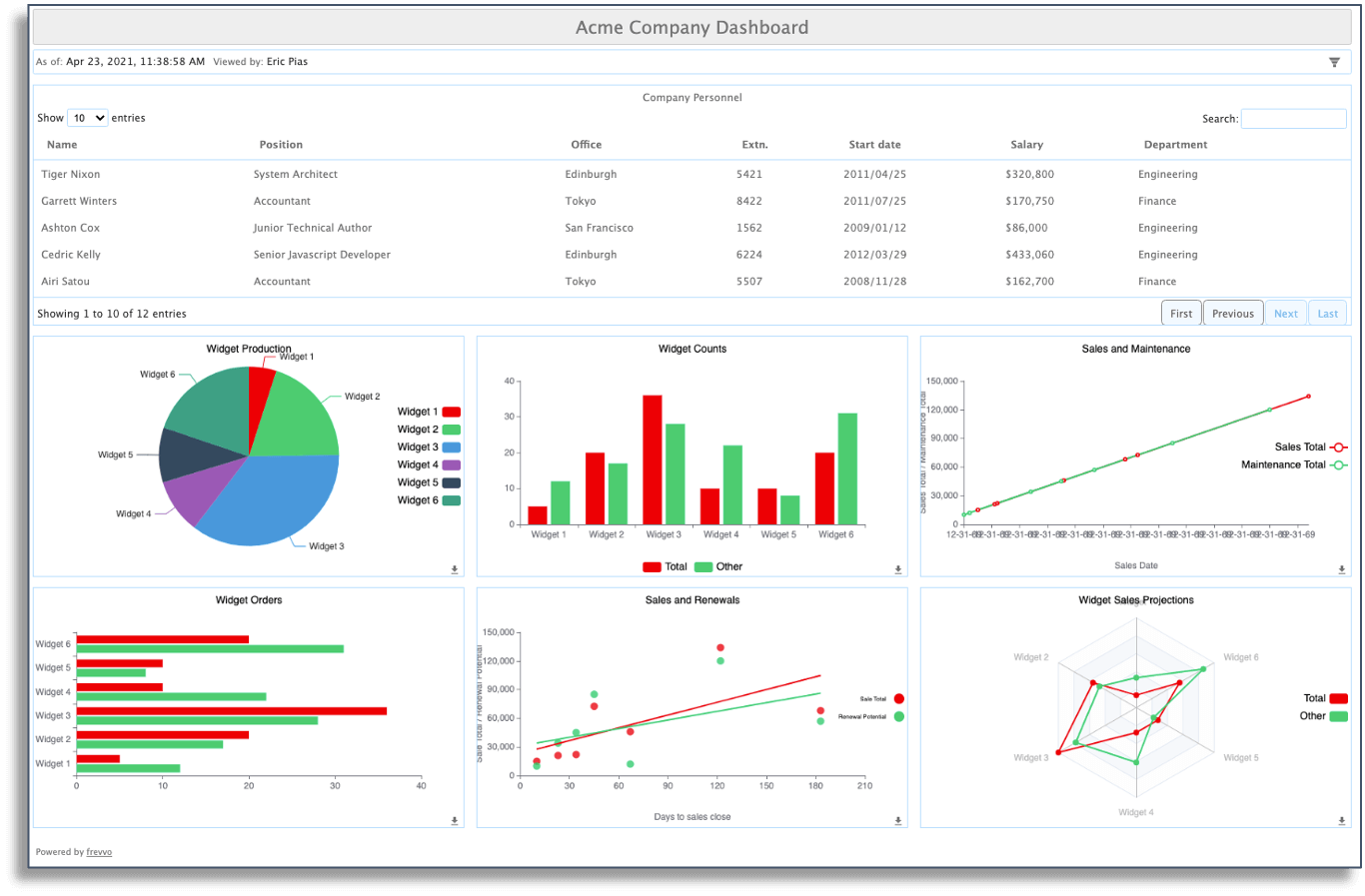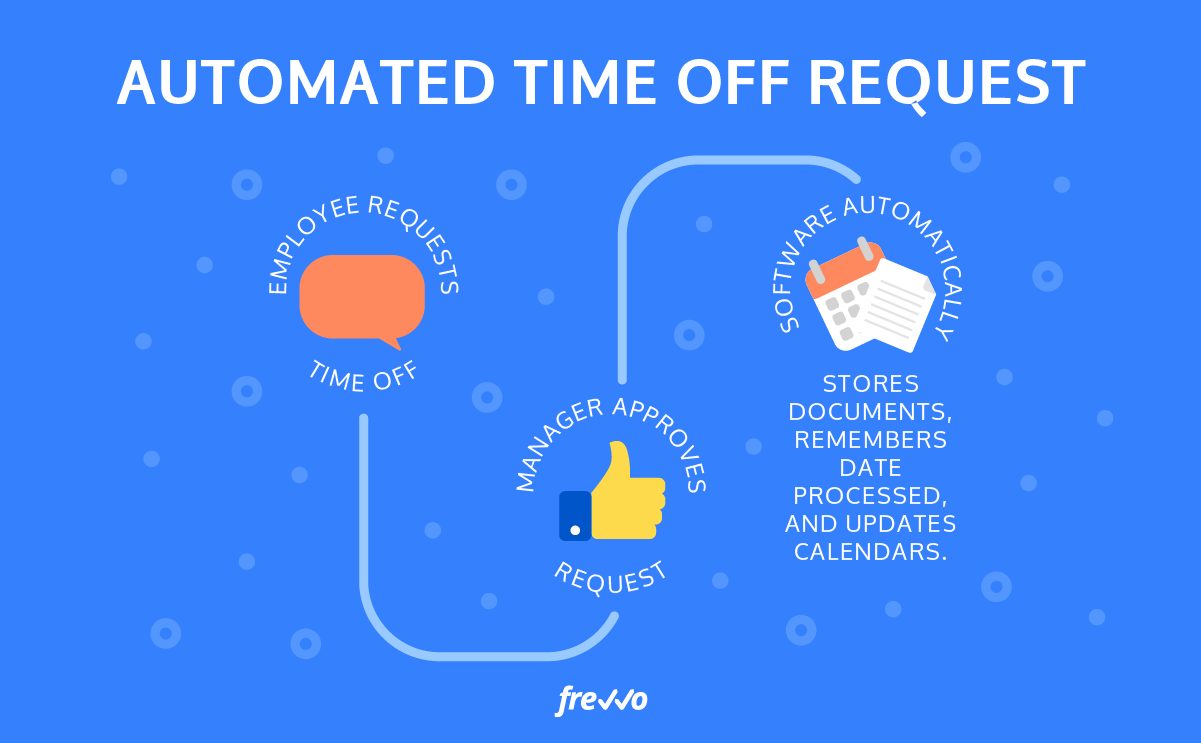When employees need to take time off, they don’t want to spend any more time than necessary getting their requests approved.
Likewise, managers don’t want to spend a ton of time reviewing time off requests or sending them back because some information is missing.
The whole point of a time off request form is to make it easier to track when employees are out of the office. But relying on paper forms is only making the problem worse.
So how can you create a more efficient time off request process?
Keep reading to learn more. In this article, we’ll look at how to optimize your time off request form and how you can automate the approval process to make it easy for everyone to take time off.
Click the links below to skip to the section you want to learn more about:
- What Is a Time Off Request Form?
- What Should a Time Off Request Form Include?
- 7 Reasons to Automate Employee Time Off Request Forms
- How to Automate Your Time Off Request Form Process
What Is a Time Off Request Form?
A time off request form is a form that employees fill out to notify their employers that they’re taking time away from work.
Employees may request time off from work because they’re feeling sick, going away on vacation, attending jury duty, or even taking a personal day.
Time off request forms typically include:
- Full name
- Personal details
- Manager ID
- Type of leave request
- Start and end dates
- Additional information
With these details, managers and office administrators can track time off requests and plan accordingly to keep the workplace staffed.
Here’s an example of a time off request form from frevvo:

Click here to try the time off request template above.
Despite how common medical leave and vacation time are in the workforce, many companies don’t have a streamlined process for approving time off requests.
They may rely on paper forms, a series of emails, or a hodgepodge of tools that make it confusing and frustrating for employees to request time off.
The lack of a transparent time off request process impacts business operations like scheduling and payroll. It also contributes to employee stress caused by poor communication, which 80% of employees deal with regularly.
If the process for taking time off is unclear, employees may feel discouraged from submitting a request. 61% of employees who had paid time off (PTO) hours reported letting them go unused, highlighting the need for more transparent processes.
Before we dive into how you can automate time off request forms, let’s look at what you should include in these forms.
What Should a Time Off Request Form Include?
Whether you’re using Microsoft Word or business process management (BPM) software like frevvo to create your time off request form, there are some key elements you’ll want to include.
Let’s take a closer look at the most important sections of a time off request form.

Employee Information
Every time off request form needs to include basic employee information like their name, role, and department.
This identifying information is important because it helps route the time off request form to the right manager(s) for approval. It also helps HR and accounting teams accurately track and record the employee’s pay for the right type of leave.
With a BPM tool like frevvo, you can integrate employee databases to automatically fill in this information, making the time off request process even smoother.
In this time off request form, employees can choose their name from a dropdown list. The form then shows the remaining days of PTO (pulled from a database) allocated to each employee.

In the example above, “Walter Hagen” can see exactly how much time off he has remaining.
Type of Leave
You’ll also need to track the employee’s type of PTO request.

While medical and vacation leave are the most common types of paid leave, you’ll need to have an approval process for any type of leave that your team might take.
These can include:
- Parental or maternity leave
- Jury duty
- Bereavement
- Birthday
- Personal day
Since so many benefits packages include leave with different uses and rates of accrual, tracking time off by type is essential for HR and accounting departments to help employees use their benefits correctly.
If you’re automating your office’s time off approval process, the type of leave can trigger certain rules that will only appear when necessary.
For example, if someone requests jury duty leave, you could add a section to upload their jury summons as supporting documentation. Or, if an employee is going on parental leave, you may require additional approval and a clear plan for the employee’s substitute.
Paid Time Off Dates
Every time off request form will need to include a space for paid time off dates to specify when an employee will be out of the office or unavailable.
In a BPM tool like frevvo, you can automatically calculate the number of days for each time off request based on the start and end date.

You can also ask employees to enter the number manually to allow for half or quarter days.
Additional Information or Documents
While you don’t want to bog down your time off request process with tons of frustrating steps, sometimes requiring additional information or documents can be helpful.
For instance, your company may ask for a doctor’s note, jury duty summons, or other documents before a supervisor can approve a request. Or, employees may need to let their manager know how their work will be covered in their absence.

If you’re creating a generic time off request form template, you might opt for a simple “additional information” section where employees can list anything that’s relevant.
But if you digitize and automate your time off request forms, you can include specific instructions depending on the employee, type of leave, or dates requested.
This second option, which you can do with frevvo’s dynamic business forms, is a better approach for simplifying the time off request process while also minimizing errors.
Approval Fields
The final but still critical piece of any good time off request form is the ability to track the approval of the request.
In a paper-based time off request form, there are typically boxes or lines for manager approval, HR receipt, or other steps of the process.

These approvals are better integrated into the workflow in an automated time off request process, which we’ll break down in an upcoming section.
Try a time off request approval process template from frevvo to see how it works.
7 Reasons to Automate Employee Time Off Request Forms
Now that we’ve covered the basics of time off request forms, let’s look at what it means to automate that process.

But first, here are the key reasons to automate time off requests forms:
- Approve requests quickly
- Eliminate unsecured, easy-to-lose paper trails
- Track all time off requests in one place
- Save time and money
- Sync your time off requests with HR systems and other data sources
- Make the process easier for employees and managers
- Maintain accurate and up-to-date information
Consider that automation is up by 80% compared to previous years. That’s largely due to an increase in remote work that caused business breakdowns in 68% of organizations.
45% of HR professionals are focusing on process automation in the next year. It’s time to update your business process management strategy to protect and grow your company into the future.
Let’s go step-by-step through automating your time off request process using frevvo.
How to Automate Your Time Off Request Form Process
Ready to digitize your time off request form and build an automated workflow that streamlines approvals company-wide?
Follow these steps to automate your time off request form process.
1. Start With the Workflow Wizard or a Pre-built Template
Start by choosing a pre-built template that best meets your needs. You can choose a simple time off request form to get started or opt for one with conditions, rules, and/or integrations.
Each template contains a fully functional form, workflow, business rules, and configurations so it’s ready to use out of the box.
Here are time off request form and workflow templates you can try:
- Simple time off request
- Time off request with Google Sheets
- Conditional time off request
- Dynamic absence records with Google Sheets
- School vacation time off request
If you don’t find one that works well for you, you can use frevvo’s workflow wizard to automatically generate a fully functional workflow.

Simply describe the steps that make up your time off request approval workflow and frevvo will instantly generate a workflow in seconds. The generated workflow contains routing, a basic form, and business rules for dynamic behavior.
2. Customize And Add Business Logic
With frevvo’s code-free workflow builder, you can add additional steps and even incorporate dynamic routing into your approval workflow.
For example, your company might have a policy that requires additional approval for time off requests over five days to make sure someone can cover those shifts.
Here’s an example of a time off request workflow with a conditional rule:

In the example above, time off requests over five days will automatically route to a senior executive for additional approval. Time off requests below five days will only require approval from a manager.
Even if you don’t have any coding experience, you can add all kinds of rules and conditions into your workflow.
Using the built-in, 100% visual form designer, it’s easy to add text fields, dropdown lists, checkboxes, and more to easily create a custom time off request form that fits your requirements.
Need additional business logic? The system comes with a zero-code visual rule builder. Anyone who’s comfortable using a spreadsheet like MS Excel can easily create highly dynamic forms without writing a single line of code.

Once you’ve finished customizing your time off request form and approval workflow, it’s time to integrate it with your database.
3. Integrate Your Employee Databases
Connecting your time off request form to an employee information database allows you to automatically fill in information easily. It also lets employees check how much time off they have remaining, so they can plan accordingly.
With frevvo, you can connect your time off request form to data sources like a SQL database, HR system, or even Google Sheets.

Integrating a database into your time off request workflow makes it easier for everyone — employees spend less time entering information and the database makes sure that only accurate information is pushed forward.
By incorporating a centralized source of truth for your employee data, you’ll eliminate a lot more inconsistencies and reduce errors in your time off process.
4. Test and Deploy
At this point, your time off request form and workflow should be nearly ready to go live. But first, you’ll want to thoroughly test your time off request process.
Try implementing User Acceptance Testing (UAT) to gather feedback before you deploy your workflow. Sometimes called beta testing, you’ll use this approach to test your workflow with a small number of users who provide detailed feedback.
After addressing any bugs, concerns, or comments left by the users, you can deploy your time off request form process company-wide.
5. Analyze and Optimize
Your work isn’t over once you’ve deployed your time off request workflow, although that’s certainly something to celebrate.
You’ll still need to consistently monitor and maintain your time off process so that it keeps working. Not only do you want to catch any problems or roadblocks early, but you also want to make sure your new process is getting the results you’re looking for.

With frevvo’s new analytics dashboards, you can track more key performance indicators (KPIs) to see how the process is helping your employees.
Here are a few KPIs you might track:
- PTO utilization rate
- Approved vs. unapproved time off
- Paid vs. unpaid time off
- Average PTO or absent days, by individual, department, or location
With a BPM tool like frevvo, you can continually look for ways to improve your workflows and stay ahead of the competition.
Starting Automating Your Time Off Request Forms
frevvo makes it easy to automate your time off request process. It offers plenty of customizable time off request form templates, as well as a code-free workflow wizard that helps you get up and running quickly.
With an automated time off request process, you’ll save time and money while keeping your employees happy.
To learn more about automating your time off requests and other processes, speak to a business process expert at frevvo today or start a free 30-day trial to test drive the software for yourself.


